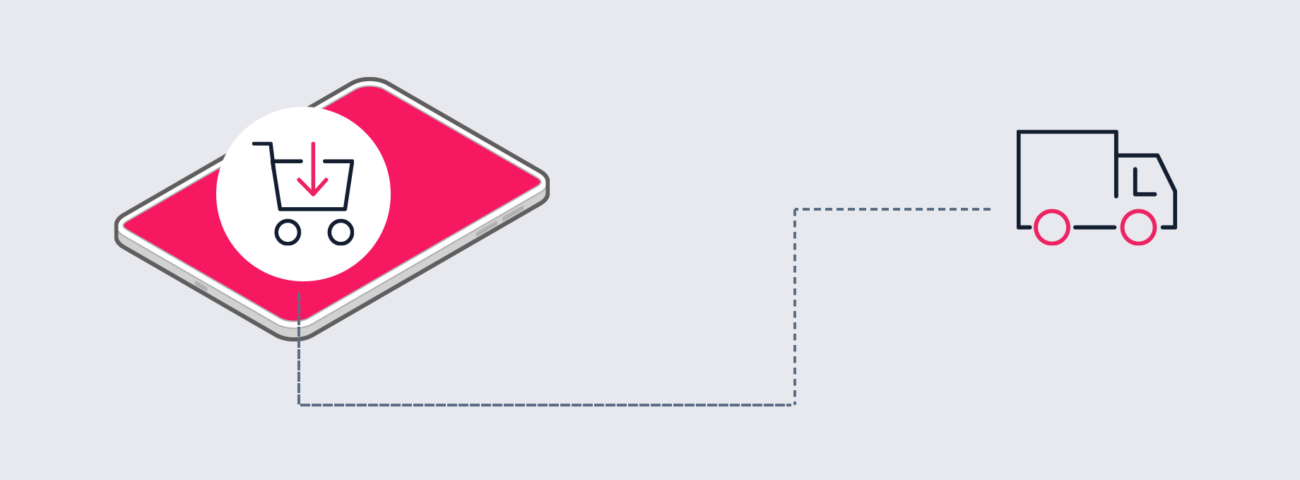
In today’s dynamic business world, agility plays a critical role in determining business success. Companies must innovate and respond quickly to new trends to thrive in a business world that demands constant change. Many ecommerce businesses struggle to become dynamic as traditional processes and platforms restrict their ability to maneuver quickly.
Legacy ecommerce platforms have a monolithic architecture that makes them rigid and complicated to work with. So how can you streamline ecommerce processes and accommodate ever-changing market trends? A headless ecommerce platform like VTEX is the solution you need to become a dynamic, future-proof business.
What is a headless ecommerce solution?
Headless ecommerce is an API-first architecture that decouples front-end customer experiences from back-end ecommerce functionalities. The front-end “head” ⏤ which is usually a pre-made template ⏤ is removed from the ecommerce architecture, leaving only the back-end for developers to work with. Developers then use APIs to develop and deliver customer-facing content and customer experiences.
With VTEX’s API-first architecture, the front- and back-end of the headless ecommerce platform function independently of one another. Businesses can modify data and functionalities in the back-end engine without interfering with user experiences, and update, edit or completely change consumer-facing experiences without disrupting back-end commerce capabilities.
Separating the back-end and front-end of an ecommerce platform boosts business agility. Here are seven ways headless ecommerce solutions streamline your business processes:

From physical stores and mobile apps to digital signages and smart devices, modern consumers have more options than ever to interact with your business. Businesses must aim to create seamless experiences across all their touchpoints to maximize conversions on all channels. Traditional ecommerce platforms make it extremely difficult to build omnichannel experiences as their architecture is not able to support every touchpoint and distribute content seamlessly across them.
With a headless ecommerce platform like VTEX, you can make your omnichannel strategy a reality. VTEX stores customer experience content centrally in a back-end engine and then uses APIs to deliver the content to any device or channel at once. With our headless, API-first architecture, you can streamline omnichannel distribution and create a unified customer experience across all your sales channels.
Website speed not only affects customer experience but also impacts your organic rankings in Google’s SERPs. The faster your website loads, the happier Google and your visitors will be. More than 40% of visitors will abandon your site if it takes more than three seconds to load. Traditional ecommerce platforms have a complex, plugin-oriented architecture that causes sluggish site performance and slower load times.
Headless ecommerce platforms, on the other hand, have an API-first architecture that makes them lighter and quicker than monolithic systems. Along with their lean architecture, headless ecommerce solutions pre-generate and cache web pages so they can deliver them to customers within one second of the request. Headless platforms employ lean architectures and agile processes to optimize ecommerce performance and create better customer experiences.

Businesses must keep up with rapid advances in commerce technologies to stay ahead of the innovation curve. Traditional ecommerce platforms, however, make it challenging to integrate third-party applications into their tightly coupled architecture. Application integration challenges hinder operational agility and cost businesses more than half a million dollars a year in lost productivity.
With VTEX’s API-first, headless ecommerce platform, you can eliminate integration challenges and create a seamlessly connected ecommerce ecosystem. Use the power of APIs to add any third-party functionality to the back-end of your headless platform without modifying any front-end code. A decoupled, API-first architecture reduces operational inefficiencies and helps you take advantage of cutting-edge digital commerce technologies.
Testing and experimentation are necessary to help you make informed business decisions. An estimated 71% of companies perform more than two A/B tests a month to help them create better customer experiences. Conducting A/B tests on traditional ecommerce platforms can be painfully slow as developers must work on front- and back-end layers simultaneously to produce different test cases.
A/B tests can be conducted more efficiently on headless ecommerce platforms. With loosely coupled layers that function independently of one another, you can easily run tests on user experiences without interfering with back-end functionalities. Headless ecommerce solutions facilitate experimentation to help you make maximum use of business resources.

Building a customized shopping experience that meets your customers’ preferences is crucial for business success. An astounding 86% of shoppers are willing to pay more for a great customer experience. Monolithic ecommerce platforms make it very time-consuming to build unique customer experiences as multiple layers between the front-end and database must be coded to produce the desired solution.
Headless ecommerce platforms, on the other hand, provide a flexible architecture to help you create any digital experience quickly and efficiently. With a decoupled architecture, you only need to work on the front-end to enhance user experiences and add services to the back-end to implement additional functionalities. Flexible headless platforms enable you to add or discard services quickly to accommodate your customers’ ever-changing needs.
Businesses should respond quickly to new digital customer experience trends to stay competitive and thrive in their industry. With tightly coupled ecommerce platforms, deploying new user experiences and updating customer-facing content can be a major headache. A small front-end project will force you to update the entire system which can take weeks or months to complete.
Front-end updates are a breeze on headless ecommerce platforms. With a decoupled architecture, you only need to update front-end code instead of modifying the entire system. This process enables rapid front-end updates without disrupting back-end business operations. Headless ecommerce solutions simplify front-end updates to help you stay on top of current and emerging digital marketing trends.
Launching new front-end experiences is time-consuming on monolithic ecommerce platforms. When rolling out new customer-facing initiatives, you must edit the database in the back-end and work on front-end development simultaneously. This arduous process reduces speed-to-market and cuts into your profits. A McKinsey study found that releasing a product six months late will earn you 33% less profit.
Replacing your legacy software with our low-code, headless ecommerce platform can help you launch new digital experiences in record time. With our headless ecommerce solution, you only need to work with front-end code to build new customer experiences. All ecommerce data is stored in a back-end engine and can be accessed via a simple API call. Headless front-end development accelerates your time-to-market and helps you reap higher profits.
Go headless with VTEX
Today’s business world is more unpredictable than ever. You must be extremely agile and highly adaptable to thrive under constant change. Traditional ecommerce platforms have inefficient architectures and processes, making them unable to keep up with ever-changing market conditions.
Replacing your monolithic system with a modern headless ecommerce platform like VTEX can help you streamline business processes and increase agility. Contact us to consult with a VTEX specialist to learn how our headless ecommerce solution can help you become a more adaptable business.

